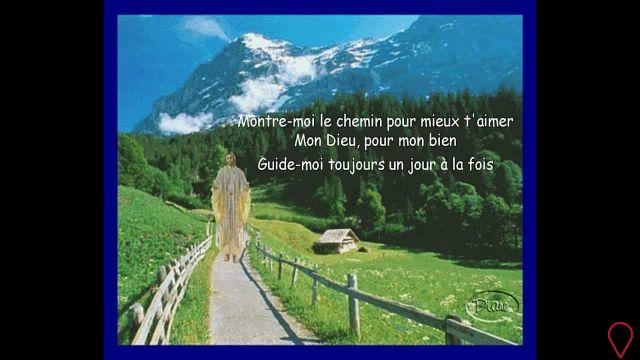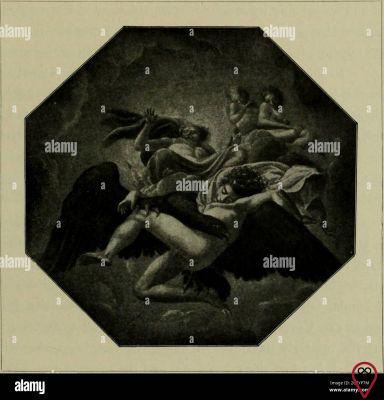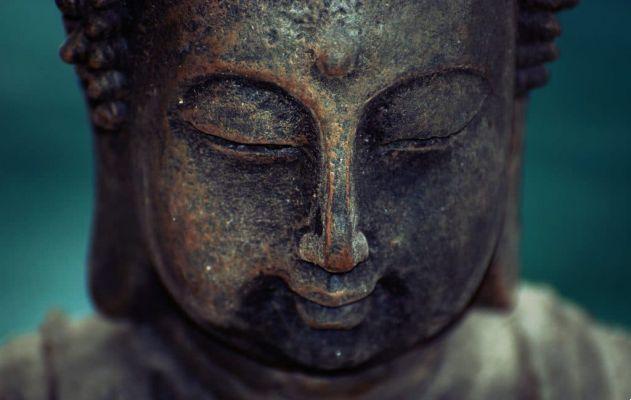Within every yin there is a yang and vice versa. You've probably heard something similar, haven't you? The concept of yin-yang comes from Taoism and is widespread around the world, but we rarely hear anyone explain to us what it really means.
Many people even think that yin-yang represents good and evil. In reality that is not the meaning, for there is nothing evil in either the yin or the yang.
Yin-yang are nothing more than two types of energy, the two qualities present in everything that exists.
In this article I will explain in more depth what each of them means. From now on we will see:
- The origin of Taoism and the yin-yang symbol
- Yin Energy: What Does It Represent?
- Yang Energy: What Does It Represent?
- 3 spiritual laws that manifest from yin-yang
- Everything is perfect as it is: a deepening in the harmony of the two energies
- keep following
The origin of Taoism and the yin-yang symbol
Origin of Taoism
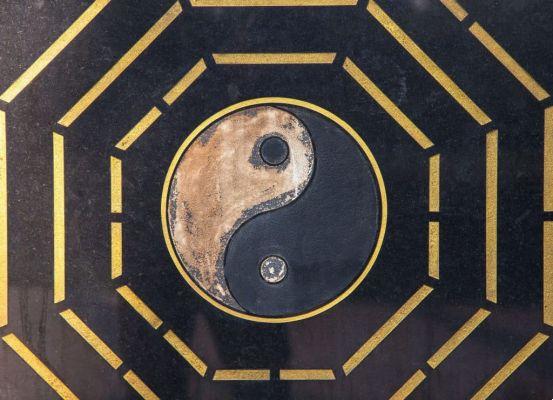
Taoism is a philosophical and religious tradition that originated in China. The word “tao”, which can also be pronounced as “dao”, means “the way”.
In essence, the tao is the whole, the unity, universe, life or the eternal. It is the principle behind all that exists, the source, the origin of creation. It would not be an exaggeration to say that the Tao is the divine, but in Taoism there is not necessarily a clear figure of a deity.
In general, Taoists prefer to say that the tao is indefinable. It is up to each person to discover the truth about the tao.
“The Path that can be trodden is not the eternal one. / The name is not the same as that which is named” – First verses of the Tao Te Ching, the main book of Taoism.
Like other philosophical and religious traditions, Taoist philosophy seeks to help human beings reach perfection, overcome their limitations and dissolve their illusions; transcend the ego, the sense of self; achieve oneness with the source, with the tao.
Tao is the path and, at the same time, the state of oneness with the whole, a state of profound peace.
Within this context arises the symbol of yin-yang: two halves that unite in the harmony of the tao through a continuous dance.
Origin of the yin-yang symbol

A legend says that there was a great sage in ancient China, around 1.300 BC, already very old. During all his life and teaching time, this sage had never been interested in recording his teachings in writing. He had also never organized a philosophical or religious system. He was someone who lived a deep wisdom, but free of definitions or forms.
His disciples insisted that he leave something on record: a book, a system, a set of precepts, or anything else that would perpetuate his wisdom. With the master's advanced age, the students feared that his teachings would be lost forever.
After much insistence on the part of the disciples, the master surrendered to their will. With detached simplicity, he scribbled a half black, half white circle. Inside the black half, a small white circle and vice versa.
The tao was thus immortalized in the symbol of yin-yang: white and black, light and dark. Presence and absence.
masters of taoism
Zhou Dunyi
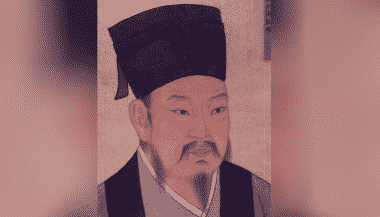
Considered responsible for popularizing the yin-yang symbol, Zhou Dunyi was a Chinese philosopher, cosmologist and writer. Apparently he didn't create the symbol, but he helped to spread it. In his teachings, he emphasized the balance between being and not being.
His book “Taiji Tushuo” contains, in the very first section, the theory of creation:
“In the beginning, there was the great ultimate being, which was fundamentally identical with not ultimate being. Because of the great being's abundance of energy, he began to move and thus produce yang (the positive cosmic force). When the yang activity reached its limit, it reverted to tranquility. Through tranquility yin (negative cosmic force) was generated. When tranquility reached its limit, it returned to movement (yang). Thus yin and yang generated each other.”
Lao Tse
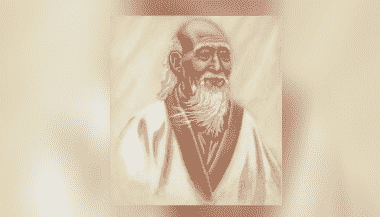
Lao-Tzu (also spelled as Lao Tze, Lao Tzu or Laozi) was an enlightened sage of ancient China considered the “father” and main teacher of Taoism.
Lao-Tzu is credited with authoring the “Tao Te Ching” (dating to the 4th century BC), a book that is recognized as the main Taoist foundation. Unlike other spiritual scriptures, the “Tao Te Ching” is a book of poetry.
Your language is quite subjective. The Tao Te Ching talks about the tao in different ways, from different angles, however without ever limiting or exhausting the definition of what the tao is.
“All things are born of Being and have a name; but Being is born of that which has no name.” – excerpt from the “Tao Te Ching”, a book attributed to Lao-Tzu.
Other important scriptures of Taoism are the “I Ching: The Book of Changes” and the “Zhuangzi” (or, in English, “Chuang Tzu”), the latter attributed to Chuang-Tzu, which we will discuss next.
Chuang-Tzu
Chuang-Tzu (also known as Zhuangzi or Zhuang Zhou) was another very important name for Taoism.
Author of at least part of the homonymous book “Zhuangzi” (or “Chuang Tzu”), Chuang-Tzu was a direct disciple of Lao-Tzu and was one of the main responsible for spreading Taoist philosophy in the rest of the world.
While Lao-Tzu taught in an extremely subjective and non-linear way, Chuang-Tzu seemed to be slightly closer to us ordinary people.
Chuang-Tzu's slightly more simplified, humorous and accessible didactics contributed to the spread of Taoism outside East Asia, receiving translations in the West. Indirectly, it may also have helped to spread the very concept of yin-yang.
Yin Energy: What Does It Represent?

Together, yin and yang represent the duality that is present in everything in the universe. They are two opposing and complementary forces. Each of them represents one half of the whole.
Yin is the receptive principle, absence, inaction, reception, the dark, the night, the moon, the feminine energy (present in both women and men).
Yin is the negative pole, not in the “bad” sense, but in the “absence and receptivity” sense, just like in a pile.
Yin energy in everyday practice

In a practical way and also making a brief correlation with the 7 chakras, yin energy can be seen in everyday life in the following ways:
- Yin energy in health: sleep, rest, recovery, deceleration, fasting.
- Yin energy in finance: savings, savings, spending cuts, expense reduction, cash inflows, financial control, receiving proposals and offers, conservative financial movements.
- Career yin energy: flexibility in routine and goals, welcoming leadership, studies, staying open to new possibilities, allowing other people to lead, accepting new opportunities.
- Yin energy in relationships: reception, sensitivity, listening, introspection, accepting invitations, allowing things to be the way of others, accepting ideas, withdrawing, receiving visitors, waiting for directions.
- Energia yin na selfestima: take it easy on yourself, stillness, introversion, silent reflection, listening, subjectivity, tranquility.
- Yin energy in our life purpose: reflection, uncertainty, openness, change of direction, inner search.
- Yin energy in relationship with God: silence, study, intuition, meditation, immanent God (inner God).
Yang Energy: What Does It Represent?

Yang is the active principle, the presence, the action, the initiative, the light, the day, the sun, the masculine energy (present in both men and women).
As in a battery or cell, yang is the positive pole – not in the sense of “good or better”, but in the sense of “presence and activity”.
Yang energy in everyday practice
In everyday practice, yang energy can be understood from the following examples:
- Yang energy in health: the waking state (awake), physical activity, movement, food.
- Yang energy in finance: spending, investing, expanding living standards, cash outflows, taking risks, making proposals and offers, bold financial moves.
- Career Yang Energy: firmness in routine and goals, incisive leadership, practices, staying focused on a single path, taking the initiative to lead, seeking new opportunities.
- Yang energy in relationships: initiative, pragmatism, speech, extroversion, making invitations, looking for things to be your way, giving ideas, approximation, visiting people, seeking directions.
- Energia that is auto-estimated: self-charge, excitement, extroversion, active questioning, spoken communication, objectivity, agitation.
- Yang energy in our life purpose: decision, certainty, conviction, maintenance of direction, external search.
- Yang energy in relationship with God: prayer, bestowal, requests, selfless work, transcendent God (outer God).
When we look at these patterns related to areas of our life, it becomes much easier to understand how yin-yang works in practice.
The imbalance of a subject or area of our daily lives comes precisely from an excess of one of the two energies: yin or yang. We will talk more about this from now on, analyzing some spiritual laws and their practical manifestations in yin-yang.
3 spiritual laws that manifest from yin-yang

Just as the law of gravity is always at work in our lives (even when we don't realize it), spiritual laws are also invisible laws that influence our daily lives.
These universal operating principles are fully connected to the concept of yin-yang. Next, I share 3 examples of spiritual laws that I explain in greater depth in the book "Everything is perfect as it is".
Law of compensated polarization

The law of compensated polarization says that the forces of nature alternate in cycles of yin and yang, like a pendulum swing. Here's the big point: balance doesn't mean 50% yang and 50% yin all the time. In fact, balance is born from the dance of yin and yang.
Imagine that you pull a pendulum all the way to one side and hold your weight on the end for a moment. Then you release it. What happens? Certainly the pendulum swings with all its force to the other side, reaching the other end.
This is the law of polarization. Every action or movement will generate energy equal in intensity, but opposite in polarity. If you immerse yourself in 100% yang (for example, spending years working without taking a vacation), you will have to “pay the price” with 100% ying moments (periods of total rest). This is not bad, quite the opposite: it is a guarantee that nature will take care of your balance and your health, both physical and mental. The problem starts when we want to control the forces of nature, thinking we totally know what is best for ourselves.
There is a perfect universe, with perfect and infallible laws that operate incessantly to ensure our well-being and evolution. In the short term, we may even resent the laws. For example, a person who is a workaholic and cannot stop working may even resent the laws of the tao for catching the flu and being forced to stay in bed for a week. Now, what would happen if the flu didn't show up?
The moment we break or try to force something against the laws that govern our lives, we realize that not even all our strength could go against the operative laws. This may sound tragic, but it is a true blessing. Just understand the laws and choose to flow with them to enjoy peace and serenity.
Therefore, the law of polarization shows that yin and yang always balance out in the long run. Those who are determined to observe the pendulum's oscillations find peace, as it is evident that life is taking care of every detail. No matter what happens, no matter how long it takes, balance is always guaranteed.
Law of give and take

Have you noticed that countless prosperous people talk about the importance of giving and receiving? Millionaires, philanthropists and big business people make a point of saying that money was made to change hands. When you generate value for someone, you are “giving” something: a product, a service, an advice, a help, a facility. In return, you also receive: money, gratitude, admiration, reputation.
We often have the impression that only those who receive the money are earning, but is it not possible that those who receive the service are also gaining various benefits?
The law of give and take, or the law of bestowal, says that things are constantly in motion in the universe. That goes for everything. Money is just one example.
In fact, giving and receiving is the basis of relationships, whether they are marital, friendship, parent-child, work, or any other kind. You give and receive love, give and receive attention, give and receive kindness, give and receive time, give and receive advice.
At every moment there are opportunities to invite and be invited, love and be loved, respect and be respected. This two-way street is so obvious that it seems childish to talk about it as a “spiritual law”. But the universal, energetic laws or laws of the tao are just that: operating principles that are always present in nature.
If we are in the habit of giving, we will receive back – regardless of the form.
This does not mean that the law of give and take is something naive, saying that we must sacrifice ourselves for everything and everyone because it is something “spiritual”. The divine lives in balance, in harmony, in win-win. We don't need to be martyrs and mistreat ourselves to practice giving. On the contrary: we can donate what we have left over.
If you have time to spare, donate time. If you have plenty of money, give a little. If you have knowledge, teach. If clothes are left over, pass them on. If you have humor left, donate joy and smiles. By being ready to give and receive, we keep the fluidity of the universe flowing in our lives at all times.
law of rhythm

Patience. This is perhaps the most important virtue to flow with the law of rhythm. This universal principle (connected with the law of polarization) teaches that life develops in cycles.
As with the seasons, our lives have periods of planting and growing (spring), plenty (summer), harvesting and preparing for winter (autumn), and scarcity or rest (winter). Rhythm is nothing more than the dance of yin and yang energies:
summer = peak of yang
Autumn = transition from yang to yin
Winter = yin peak
Spring = transition from yin to yang
We often wish our life to be an eternal summer: always abundant, always sunny, always full of opportunities. However, the cycles of life come to bring balance. We also need rest and reflection in winter.
We all have times of abundance in our lives, those times when we receive the most invitations and opportunities, when we have lots of ideas and energy left over.
But life is made of cycles – as obvious as this is, we don't always see it.
One hour summer is gone. When winter comes, you can't pretend he's not there. The only way is to accept it, seek comfort, take some blankets out of the closet, find ways to warm up.
Winter allows us to look inside in a unique, deep and intense way. At that moment, we reflect and learn to see things in a different way. We create awareness of what we really want.
Then spring arrives. We started to plant new projects, new habits, new ideas. The reflection brought by winter is now put into practice. We take action, build up the courage to face our biggest fears, and move forward (even if the doubts still exist). Gradually, the seeds we plant grow and begin to bear fruit.

After watering and caring for the “plants” we sow, the climax finally arrives: summer. This is the time when we reap fruits of various kinds: financial, achievement, well-being. If we are smart and observe the cycle of nature, we can take advantage of this moment to create stocks of energy, money, resources.
So autumn arrives, still quite fertile. Gradually, however, the cold intensifies and we retreat. We make some cuts: less activity, less spending, less commitments. We start to take care of our energy, because we realize that it also wears out.
We restart the cycle, resting and reflecting on what we have learned. That way, we can always sow again.
This is the law of rhythm. Everything that is yang tends to become yin and vice versa. Rest turns into action. The initiative shifts to reflection. Inertia becomes movement. Speech becomes hearing. Thought becomes speech. The leader enjoys being a follower. The led starts a new movement.
The beauty of the law of rhythm is in accepting each phase. We can learn to enjoy the sunny days and enjoy the cold days.
Suffering is not in the cold or in the heat. We suffer when the day is winter, but we want summer. We suffer when the day is summer, but we crave the cold. Gratitude for the present moment is, once again, the antidote to relieve anguish.
Gratitude reminds us that it is possible to accept the present moment as it is, without waiting for it to change, doing our best. That's the power of love. This is the power of the tao.
You may also like
- Be amazed at the true meaning of yin-yang
- Understand how Taoism can bring more harmony to your life
- Transform yourself and change your reality with Taoism
Book “Everything is perfect as it is – understanding spiritual laws to see how everything fits together”
Having the concept of yin-yang as one of its main bases, the book of my authorship "Everything is perfect as it is - understanding the spiritual laws to understand how everything fits together" delves into the 3 laws I explained above and also explains others. 14 spiritual laws and their relationship to our daily lives.
This is a recommended book for anyone who enjoys spirituality regardless of religious preferences; and, more than that, for all people who want to learn to more easily observe the practical applications of spirituality in everyday life.
The book will go into pre-release soon and you can be notified first hand at this link.
I hope you enjoyed reading about yin-yang and the essence of Taoism. If you want to delve deeper into spiritual laws, I would love to have you as a reader of “Everything is perfect as it is”. Gratitude!







